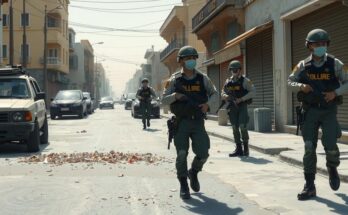The Chaharshanbe Suri festival in Iran experienced violent clashes leading to over 15 deaths and 1,700 injuries. While traditional rituals took place, protesters also voiced discontent against the government, leading to confrontations with security forces. This year’s celebrations reflect escalating unrest and potential calls for political change amidst economic turmoil.
The Chaharshanbe Suri festival, held in Iran in anticipation of Nowruz, saw both vibrant celebrations and violent unrest. Traditionally a fire jumping festival linked to Zoroastrian customs aimed at promoting renewal, this year’s event marked a tragic turn, resulting in over 15 fatalities and more than 1,700 injuries due to accidents involving fireworks. Additionally, air pollution in Tehran reached hazardous levels, exacerbating health concerns during the festivities.
While many engaged in the customary rituals, the festival also turned into a hotbed for protests across major cities such as Tehran, Mashhad, and Isfahan. Protesters burned images of Supreme Leader Ali Khamenei and clashed with law enforcement while voicing opposition against the government. Reports indicate that security forces deployed tear gas and rubber bullets in an effort to control the demonstrations, which persisted in both urban and rural locations.
Despite governmental warnings against political gatherings, the significant turnout at the festival epitomized prevalent public discontent. Opposition activists labeled the event as “The National Uprising of Flames,” which signifies growing resistance to the religious leadership in Iran. Amid economic hardship, rising inflation, and state repression, some analysts suggest that the country may be on the brink of a larger movement seeking political reform.
The Chaharshanbe Suri festival in Iran this year was marked by both traditional celebrations and significant violence, leading to multiple fatalities and injuries. The festival also served as a protest platform against the government, signaling increasing public discontent with economic conditions and political repression. As analysts observe, these events may indicate a growing demand for political change within the country.
Original Source: themedialine.org




